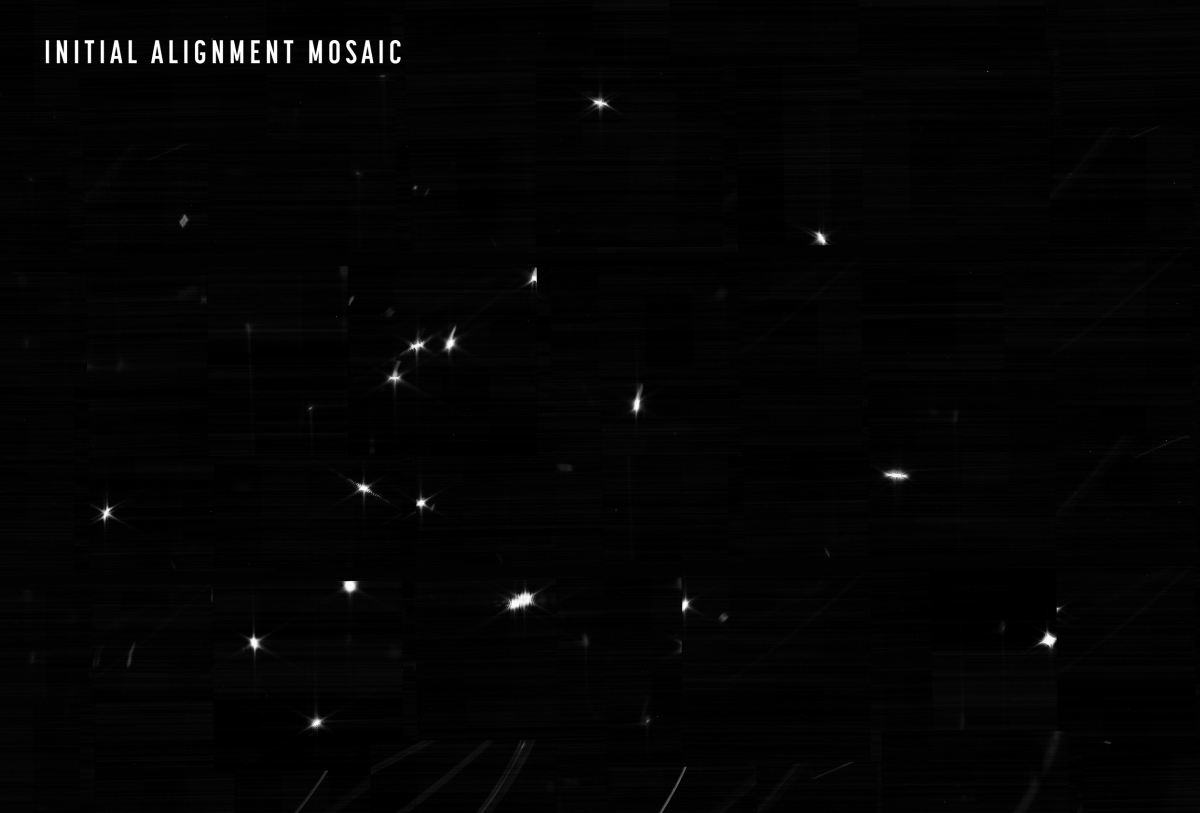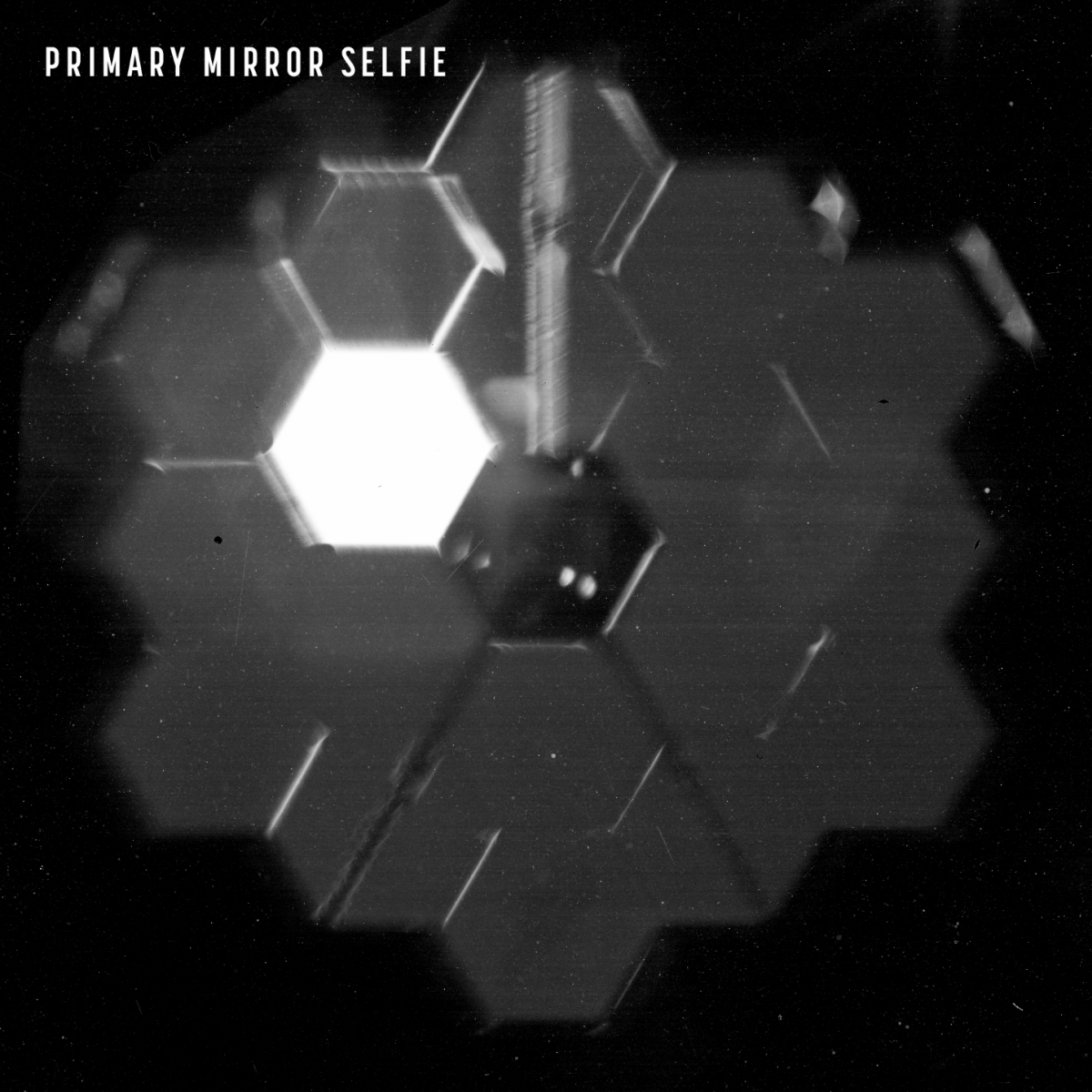The James Webb Space Telescope's first images have scientists excited (and a bit relieved)
"It is emotional," Lee Feinberg, Webb optical telescope element manager, said today.

The James Webb Space Telescope has captured its first grainy images of a distant star and mission scientists are, to put it mildly, ecstatic.
Today (Feb. 11), NASA unveiled the first images from the James Webb Space Telescope, which has identified starlight for the first time using its NIRCam instrument (which is essentially a camera that also helps to keep the primary mirror's segments aligned).
"This amazing telescope has not only spread its wings, but it has now opened its eyes," Lee Feinberg, the Webb optical telescope element manager at NASA's Goddard Space Flight Center in Maryland, said today during a news conference.
"This is the first time we're getting data on mirrors that are actually at zero gravity and using starlight to illuminate the primary mirror," Feinberg added.
Live updates: NASA's James Webb Space Telescope mission
Related: How the James Webb Space Telescope works in pictures
Webb's first image of the sky was taken in the very early morning of Feb. 2, Marcia Rieke, principal investigator for the NIRCam instrument and regents professor of astronomy at the University of Arizona in Tucson, said during the news conference.
The image, which you can see above, shows a star called HD 84406. The starlight was seen through each of Webb's 18 mirror segments in its primary mirror, so the resulting image shows a mosaic of 18 scattered bright dots.
Get the Space.com Newsletter
Breaking space news, the latest updates on rocket launches, skywatching events and more!
"This is an initial phase where each segment is acting as a separate telescope in combination with a shared secondary mirror," Feinberg said.
"As Webb aligns and focuses over the next few months, these 18 dots will slowly become a single star," Thomas Zurbuchen, NASA's Associate Administrator for the Science Mission Directorate, said on Twitter.
Going as planned
To make this image happen, the team had to factor in how misaligned the mirror segments, which are slowly and carefully aligning, were at the time. Since not all the segments were facing the same direction, "those 18 spots of light could potentially be very spread out in the sky," Marshall Perrin, a Webb deputy telescope scientist at the Space Telescope Science Institute in Baltimore, said during the news conference.
This required the team to capture many images of this region of the sky to find the starlight with all 18 segments. Webb captured "more than 1,500 images in total," in this first observation, Perrin said.
Additionally, this process required "many Webb systems to act together as an observatory for the first time in flight," Perrin added.
Even in this preliminary image, "the initial results are very similar to our simulations," Feinberg said, adding that this NIRCam test run matched predictions, met expectations and nothing seems to be going wrong.
"At this point, we've been able to analyze multiple engineering images that help us understand the alignments and the mirrors and cells. And we don't see anything of concern," Feinberg said.
This is good news as NIRCam is one of Webb's science instruments so it holds significant importance to the mission.
In fact, it's so critical that "we built two exact copies of NIRCam and bolted them back to back," Rieke said. "We get twice the view, which is a huge help."

Excitement abounds
This mission milestone is not taken lightly by the Webb team members. The space telescope faced decades of challenges and delays and after launch, had to undergo a risky deployment with hundreds of "single-point failures" that could've doomed the mission.
But now, safely unfolded and at its destination in space, this incredible early data from Webb has sparked cautious but overwhelming excitement from the team that made it all happen.
Rieke, who has worked on the mission for 20 years, told Space.com today that "it is just unbelievably satisfying to know that my team, a broadly distributed team across three countries ... came together and made this work."
Feinberg added to Space.com that he feels "sort of mixed emotions right now." He shared that "after all these years, to actually see data when we're in zero gravity in space, it is emotional."
"I will say, in the room when we were looking at the data, people were really excited," he noted. However, "We still are being a little cautious, because we still have things that we have to get through ... but I will definitely say when I went home Saturday night, two days later [after the image was taken], I know my wife said to me it was the first time she'd seen me smile since December."
"As we watched the data come down, a few images at a time spread over hours and spread over the day, we started seeing those bright spots of light that we were looking for," Perrin said. When it all started coming together "that was just a real wow moment. Just lots of tears and excitement from everybody there in the room," he added.
Onwards and upwards
In addition to the mosaic, NASA has released an annotated version of that image as well as a "selfie" that NIRCam took of Webb's iconic golden mirror.
Webb will continue to align and focus its mirror segments so that they all act as one and can laser-focus their view on distant cosmic objects. There is no rush, however, as Webb's other science instruments continue to cool down as they are still too warm to come online.
The team expects the initial alignment of Webb's mirror segments to take about a month to complete, Perrin said.
Webb launched Dec. 25 on an almost million-mile (1.5 million kilometers) journey through space. The largest space telescope of its kind and the most powerful ever sent out into the cosmos, Webb is on a mission to explore the farthest corners of the universe. Webb observes in infrared light, or what we call heat, which (once it's cooled down enough to do so) will allow the space telescope to observe our universe's earliest light after the big bang, watching the first stars and galaxies form, scientists hope.
Email Chelsea Gohd at cgohd@space.com or follow her on Twitter @chelsea_gohd. Follow us on Twitter @Spacedotcom and on Facebook.
Join our Space Forums to keep talking space on the latest missions, night sky and more! And if you have a news tip, correction or comment, let us know at: community@space.com.

Chelsea “Foxanne” Gohd joined Space.com in 2018 and is now a Senior Writer, writing about everything from climate change to planetary science and human spaceflight in both articles and on-camera in videos. With a degree in Public Health and biological sciences, Chelsea has written and worked for institutions including the American Museum of Natural History, Scientific American, Discover Magazine Blog, Astronomy Magazine and Live Science. When not writing, editing or filming something space-y, Chelsea "Foxanne" Gohd is writing music and performing as Foxanne, even launching a song to space in 2021 with Inspiration4. You can follow her on Twitter @chelsea_gohd and @foxannemusic.









